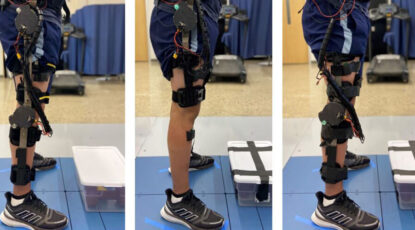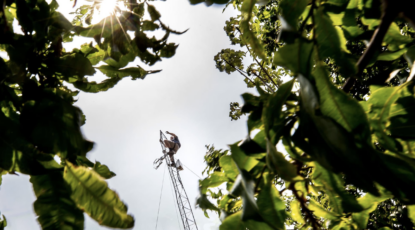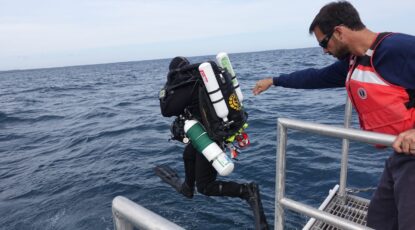Science and Technology
-
Exoskeletons to assist workers, the elderly, etc.
U-M is developing a solution for the one in eight Americans who faces a mobility disability. A $1.7 million grant from the National Institutes of Health is funding the creation of a modular, powered exoskeleton system that could be used on one or multiple joints of the legs.
-
Individual finger control for advanced prostheses demonstrated in primates
In a first, a computer that could fit on an implantable device has interpreted brain signals for precise, high-speed, multifinger movements in primates. This is a key step toward giving those who have lost limb function more natural, real-time control over advanced prostheses.
-
Solar cells with 30-year lifetimes for power-generating windows
A new transparency-friendly solar cell design could marry high efficiencies with 30-year estimated lifetimes, which may pave the way for windows that also provide solar power. The high-efficiency but fragile molecules for converting light to electricity thrive with a little protection.
-
Dementia’s toll on US
U-M study shows major gaps in who gets care that could help them remain at home. Black, low-income, or people with lower levels of education are less likely than their counterparts to have available spouse caregivers, but more likely to have adult children available to provide care.
-
XR technology ‘brings’ conference goers to iconic U-M space
As the Center for Academic Innovation prepared for its first annual XR Summit, organizers had an idea: create a virtual representation of the Diag for people to meet, using the technology that was the focus of the event. So cool.
-
First-responder robots could team with wildfire fighters
A three-year project funded by a $1 million grant aims to equip bipedal walking robots with the technology to trek in areas that are too dangerous for humans, including collapsed buildings and other disaster areas.
-
Data is life: Amazon holds clues about climate
Follow Michigan researchers deep into (and above) the Amazon as they collect data, day by day and tree by tree, that could drive a better understanding of the Earth’s climate future.
-
Lake Huron sinkhole surprise
Researchers propose that increasing day length on the early Earth may have boosted the amount of oxygen released by photosynthetic cyanobacteria, changing the planetary rotation rate.
-
Snails help solve mystery with world’s smallest computer
U-M scientists using a computing system so tiny it can stick to a snail’s shell recently collected data ‘that nobody had been able to obtain’ before. Evolutionary biologists are using the miniaturized sensing computers to understand how to preserve and protect endemic species.










